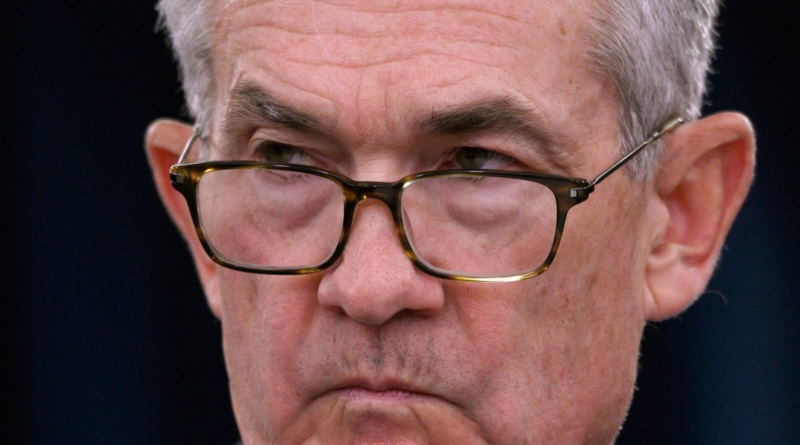Fed Chair Jerome Powell faces a precarious balancing act amid criticism from Republicans and Democrats who claim he ‘gave in to bullying’
Federal Reserve Chair Jerome Powell is navigating a minefield of political pressure from both Democrats and Republicans.
Democrats are pressuring Powell to cut interest rates, which he didn’t do at Wednesday’s Fed meeting. Meanwhile, Republicans don’t want Powell to do anything before the election. Yet the central bank is expected to remain rigorously independent to ensure its decisions are made solely based on economic data and market conditions and not influenced by any political considerations.
At Wednesday’s meeting Powell said he was “absolutely” convinced that even the widely expected September rate cut could be apolitical. “We don’t change anything in our approach to address other factors, like the political calendar,” he told reporters.
However, the Fed must contend with the politics of an election year, even as it attempts to maintain its crucial arm’s-length distance, according to Columbia Business School economics professor Brett House. “While the Fed isn’t immune to politics, it’s not subject to them either,” he told Fortune.
The pitch of political voices ratcheted up in the days before and after Wednesday’s meeting.
A group of progressive Democratic senators including Elizabeth Warren (D-Mass.), John Hickenlooper (D-Colo.), and Sheldon Whitehouse (D-R.I.) wrote Powell a letter accusing him of delaying rate cuts because of political pressure from Republicans. “The data appears to clearly justify cutting rates, the failure to do so would indicate that the Fed is giving in to bullying,” the senators wrote.
Warren, Hickenlooper, and Whitehouse did not respond to a request for comment.
Inflation data has been coming down gradually in recent months. The Fed’s preferred inflation metric, the personal consumption expenditures index, fell for the past three months. In remarks after Wednesday’s meeting Powell seemed pleased with the state of the labor market, which he said was finally returning to an appropriate balance after being “overheated” in the post-pandemic recovery. However despite these promising trajectories, the Fed chair continued his mantra of wanting to see “more good data” that indicated these trends weren’t temporary in order to make his final decision.
The Democrats felt Powell was waiting unnecessarily and for the wrong reasons. “Refusing to follow the economic data and succumbing to political threats would be a subversion of your mandate,” the three Democratic senators told Powell. “We urge you to make monetary policy in the interests of the American public, not a particular political party.”
Republicans on the other hand didn’t want any rate cuts prior to the election. “I personally don’t think they should [cut rates],” Sen. Kevin Cramer (R-N.D.) told Politico earlier this month. “At this point, anything they do before November would be rightfully—would raise the question of their own independence.”
GOP members view a boost to the economy as a blow to their campaign message that the economy is faltering. Former President Donald Trump, the current Republican nominee, has been among the most vocal in pushing the Fed to hold steady. In a February interview, Trump accused Powell of looking to cut rates before the election “for the sake of maybe getting people elected,” he told Fox Business.
Still other Republican politicians left the door open for rate cuts, but only if they deemed them appropriate. “It’s justified if it’s justified,” Rep. Andy Barr (R-Ky.) told Politico Wednesday. “But the fact is, they’re not there yet. They haven’t achieved price stability yet.”
There is no evidence the Fed would cut rates if the macroeconomic picture did not warrant doing so. Powell said the Fed would only look at the data when making its considerations. “This is my fourth presidential election at the Fed; I can tell you this is how we think about it,” he said. “Anything that we do before, during, or after the election will be based on the data, the outlook, and the balance of risks and not on anything else.”
Even if interest rates did get cut before the election, their impact on everyday people may be limited and indirect. A cut would ease some pressures on borrowing costs, but its full effect would take months to flow through the economy to impact interest rates for things like auto loans, mortgages, and bank loans. A cut in September would only leave about a month and a half before Election Day, hardly enough time for meaningful macroeconomic change.
The consensus is that “Fed rate movements take approximately eight to 12 months to have a widespread economic impact,” said Kathleen Grace, CEO of Fiduciary Family Office, a firm that manages the personal wealth of high-net-worth individuals. “However, what consumers typically experience is a more immediate market reaction to changes in policy.”
There is a minority of analysts who believe there are economic reasons the Fed will wait until after the election. They consider the current labor market to be too strong to justify a rate cut, according to Scott Helfstein, head of investment strategy at Global X, an ETF provider with about $40 billion in assets under management. “We believe the market may still be too optimistic around a September cut,” he said in an email. “One cut in December remains our base case unless the next two job reports show a material slowdown in the labor market.”
Meanwhile, as the Democrats and Republicans bicker over whether the Fed is too political or whether September is the right time for a rate cut, Powell reminded everyone the central bank hadn’t made up its mind one way or the other. “I don’t know what the data will reveal,” Powell said.
Will Daniel contributed reporting to this article.




